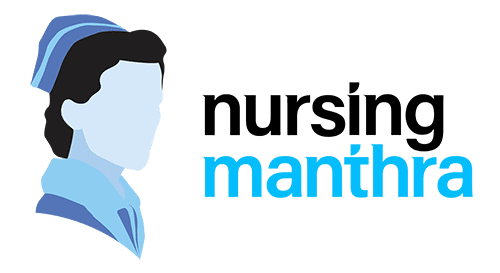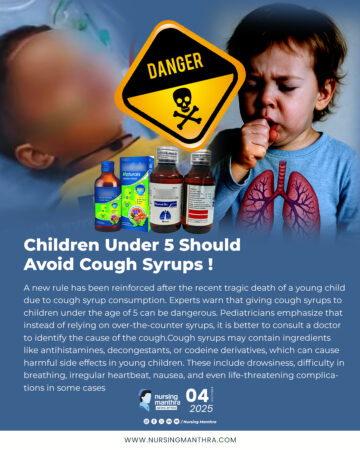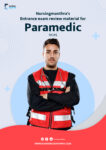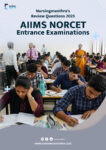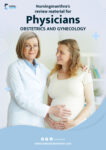Are you considering a career as a nurse in Canada? The process may seem daunting, but this guide will break it down step by step, ensuring you have a clear understanding of the requirements and steps to take.
Understanding the Timelines and Fees
Before diving into the registration process, it’s essential to comprehend the timelines and associated fees. The National Nursing Assessment Service (NNAS) is your primary contact for the assessment process.

- Main Application Order: Start with the Main Application Order, selecting your nursing group and preferred province. This application remains active for up to 12 months from the date of submission, provided all required documents are received within this timeframe.
The Application Timeline
The timeline for your application can vary depending on several factors:
- Document Submission: The clock starts when NNAS receives all your required information and acceptable documents.
- Language Proficiency: If necessary, you’ll need to complete a language proficiency test, and the timeline depends on when you successfully pass this test.
- Document Translation: If any of your original documents are in a language other than English or French, they must be translated, which can add time to the process.
Keep in mind that after receiving your Advisory Report, you’ll need to apply to the regulatory body in your chosen province. Each province may have additional requirements and timelines, extending the process by up to another 12 months.
Top Tips for Efficient Application Management
- Read the applicant handbook to fully understand the process.
- Gather required documents before starting your application.
- Reach out to the support team for any questions.
- Follow the step-by-step guide for a structured approach.
Understanding the Costs
In addition to the main application fee, there are other potential costs throughout the process. These may include document translations, appeals, advisory reports, and more. Refer to the Application and Other Fees section on the NNAS website for detailed information.
Submitting Your Proof of Identity
You must submit two notarized copies of original identification documents, complete with your signature. Notarized copies in Canada must be prepared by a notary public or lawyer, while outside Canada, government-approved officials must handle them.
Acceptable forms of photo identification include a passport, driver’s license, or other government-issued ID. Other acceptable documents include a birth certificate, legal name change affidavit, marriage certificate, or divorce decree. Ensure at least one form of identification includes a current photo.
If any documents are in a language other than English or French, they must be translated by a certified translator into one of these languages.
Creating Your Online Account
The first step in the process is to set up an online account with NNAS. This account allows you to complete and track your application, view emails, check language test results, and update your contact information.
Overview of the Application Process
The application process involves several forms that need to be completed and submitted:
- Nursing Education Form: This form must be sent to each nursing or nursing-related post-secondary school you attended outside of Canada. The school officials should complete it and send it directly to NNAS.
- Nursing Registration Form: Send this form to all nursing licensing authorities where you were previously licensed or registered outside of Canada. Each authority should complete it and send it directly to NNAS.
- Nursing Practice/Employment Form: This form must be sent to all employers you’ve worked for in the past five years. Employers should complete it and send it directly to NNAS.
- Language Testing Results: If English or French is not your first language, you’ll need to complete language testing and have the results sent directly to NNAS from an approved language testing agency.
Canada PR Visa for Nurses from India
Canada is actively seeking skilled nursing professionals from India to contribute to its growing healthcare sector. There are several pathways for nurses to immigrate to Canada:
- Express Entry for Indian Nurses: This program includes the Federal Skilled Worker Program (FSWP), Canadian Experience Class (CEC), and Occupation In-Demand Stream. To apply, you’ll need at least one year of relevant nursing experience and a job offer from a Canadian healthcare institution.
- Provincial Nomination Program (PNP) for Indian Nurses: Each Canadian province has its own immigration pathway, and you can apply through the PNP if your occupation is in demand in a particular province.
Nova Scotia Immigration for Nurses in 2019
Nova Scotia, in particular, has been actively recruiting nurses from around the world to meet its healthcare needs. To apply, you typically need one to three years of nursing experience and at least a bachelor’s or master’s degree in nursing.
Quebec Skilled Worker Immigration Program (QSW)
Quebec offers the QSW program for internationally educated nursing professionals. This program allows you to obtain Canadian permanent residency without a job offer in Canada. Points are awarded based on factors like age, education, work experience, and language proficiency.
Canadian Work Permit – Temporary Residency Visa
You can also work in Canada as a temporary resident by obtaining a valid job offer from a Canadian employer. After working in Canada for some time, you can apply for Canadian permanent residency through programs like the Canadian Experience Class and Provincial Nomination Programs.
How to Register as a Nurse in Canada
To become a registered nurse in Canada, you must register with the Canadian Nursing Association (CAN) or the Canadian Council for Practical Nurse Regulators (CCPNR). The specific registration requirements are managed by individual provinces and territories in Canada.
Express Entry Process
If you’re applying for a Skilled Worker visa, create an Express Entry profile once you’ve completed the educational assessment and language proficiency requirements. This profile is crucial for your immigration to Canada.
This guide outlines the steps and requirements for nurses looking to register and work in Canada. Whether you’re from India or another country, Canada offers multiple pathways for skilled nursing professionals to build a rewarding career in its healthcare system.
How to get licensed in Canada as a foreign-trained nurse-Steps:
step 1-Determine your eligibility
step 2–Make WES application
Step 3- Create NNAS application
Step 4– Pass language proficiency exam
Step 5-Obtain NNAS advisory report
Step 6-Register with Provincial regulator
Step 7–Making license application payment
Step 8–apply for visa
Step 9–Arriving in canada and apply for jobs
Steps in detail:
1. Determine your eligibility:
check NNAS website that youa re eligible for license as a nurse. If you are eligible youhave to follwo below steps.
2. Obtain WES report
. Create an Account on WES Portal
Create your account on WES’s official website by visiting it. Make sure to choose Canada as the country where you will use your evaluation since WES also does ECA for the United States.
3. Registration with National Nursing Assessment Service (NNAS)
Internationally educated nurses who qualify for an RN, RPN, or LN license must complete an online National Nursing Assessment Service (NNAS) application before immigrating to Canada.
How to do it?
- Create an online account, pay the fee, and start your application: Select one nursing category and one province for your application and pay the main application order fee of $650 USD plus taxes. You have 12 months to complete your documentation and submit your application after paying the fee.
- Provide your identity documents: Submit notarized, signed copies of two identification documents, including one photo ID, such as your passport, driver’s license, or other government-issued identification. Other acceptable identity documents include birth certificates, name change affidavits, and marriage certificates.
- Submit your nursing education form: Send printed copies of the form to your colleges where you completed nursing. The institutions will have to send the completed forms, along with your academic transcripts and course descriptions, directly to NNAS. Internationally qualified nurses DO NOT require a separate Educational Credentials Assessment (ECA).
- Submit your nursing registration form: Send printed copies of the form to all licensing authorities where you were registered as a nurse outside Canada. The licensing authorities will need to complete the form and send it to NNAS directly.
- Submit your nursing employment form: Send printed copies of this form to all the employers you’ve worked for in the past five years. Your employers must send the completed forms to NNAS directly.
- Submit your language test results: If your first language isn’t English or French, you must appear for an approved language test (IELTS, CELBAN, or TEF) and meet the minimum score threshold. If you live and work in a country where the primary language is English/French and your nursing study program was in one of these languages, you don’t need to submit language test results like UK, USA, Newzeland, Ireland,Australia and otehr english speaking countries.
- To take IELTS for nursing in Canada, you’ll most likely be applying for a Federal Skilled Worker visa , which means you’ll need the IELTS General Training test.
- To be accepted as a skilled worker, you must have an overall IELTS score of at least 7, with a minimum of 7 in the Speaking and Writing sections, 7.5 in Listening and 6.5 in Reading.
- NNAS will validate foreign nursing credentials which is recieved and compare them to Canadian qualifications and other documents also which you submitted. NNAS will then prepare a report on your nursing education, registration history, and experience and send it to your provincial regulatory authority.
4. . Apply to register as a nurse in your province:
Most provinces allow you to complete the licensing and registration process online from outside Canada. The entire process, including the NNAS application, can take up to 18 months. Be sure to start the process as early as possible so you can begin your nursing career in Canada soon after arrival.
-After completing your NNAS application, contact your provincial or territorial regulator and ask them to consider your application for a nursing license.
-The regulator will only start the process after they receive your file from NNAS.
-At this stage, you need to pay an initial application fee which varies by province and nursing category.
-The provincial regulator will review your nursing education credentials, evidence of recent practice (work experience in the past three years) and proof of language proficiency.
-If your application doesn’t meet the licensing requirements, you may be asked to complete additional education or evaluations before you can qualify.
To qualify for a provincial nursing license, you must also:
- Be a Canadian citizen, permanent resident, or have authorization to work in Canada.
- Pass the Registration Examination for the applicable nursing category to prove your competency. RN license applicants must appear for the NCLEX-RN exam (National Council Licensure Examination) while LPN applicants must give the REx-PN test (Regulatory Exam – Practical Nurse).
- Complete the Jurisprudence Examination to demonstrate your knowledge of the laws, regulations, standards, and guidelines that apply to the nursing profession in your province or territory.
- Declare whether you suffer from any mental or physical condition or disorder that might impact your ability to practice nursing.
- Submit a criminal background check report and declare any past offences or instances where you were refused registration as a nurse in any country.
Once you met all the licensing requirements, you can pay the registration and first year membership fee and complete your registration online.
Provinces in Canada:
1. British Columbia:
-British Columbia College of Nursing Professionals and Midwives
2. Alberta:
-College of Registered Nurses of Alberta
-College of Licensed Practical Nurses of Alberta
-College of Registered Psychiatric Nurses of Alberta
3. Saskatchewan:
-Saskatchewan Registered Nurses Association
-Saskatchewan Association of Licensed Practical Nurses
-Registered Psychiatric Nurses Association of Saskatchewan
4. Manitoba:
-College of Registered Nurses of Manitoba
-College of Licensed Practical Nurses of Manitoba
-College of Registered Psychiatric Nurses of Manitoba
5. Ontario:
-College of Nurses of Ontario
6. Québec:
-Ordre des infirmières et infirmiers du Québec
-Ordre des infirmières et infirmiers auxiliaires du Québec
7. New Brunswick:
-Nurses Association of New Brunswick
-Association of New Brunswick Licensed Practical Nurses
8. Nova Scotia:
-Nova Scotia College of Nursing
9. Prince Edward Island:
-College of Registered Nurses of Prince Edward Island
-College of Licensed Practical Nurses of Prince Edward Island
10. Newfoundland and Labrador:
-College of Registered Nurses of Newfoundland and Labrador
-College of Licensed Practical Nurses of Newfoundland and Labrador
Territories in Canada:
- Northwest Territories :
-Registered Nurses Association of the Northwest Territories and Nunavut
-Government of Northwest Territories, Registrar, Professional Licensing,
-Health and Social Services
- Nunavut:
-Registered Nurses Association of the Northwest Territories and Nunavut
-Government of Nunavut, Department of Health
- Yukon :
-Yukon Registered Nurses Association
-Government of Yukon, Yukon Department of Community Services
If you’re deciding where in Canada you want to live, there are a few factors to consider. climate, culture, language, travel distance duration.
Step – Apply for a work visa:
There are 3 ways to apply to work in Canada as a nurse:
- Federal Skilled Worker Program (Express Entry):
-If you have at least one year of continuous experience working in nursing, you may be able to apply for a work visa under the Federal Skilled Worker Program (Express Entry) . If you’re successful, you can then apply for permanent residency. - Québec’s Regular Skilled Worker Program (QSW)
-If you wish to work in Québec, you can check to see if you are eligible for the QSW program .
- Provincial Nominee Programs (PNP)
-Depending on which province or territory you wish to work in, you may be able to apply for a PNP which can sponsor you to come work in that area.
If none of the above options are suitable for you, you might want to consider furthering your education by studying in Canada. There are additional immigration streams for students in Canada, so if you’ve been thinking about further studies then this may be a good option for you.
This is all about Canada registration process for nurses. Thank you.
